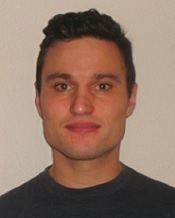Program Information
Whole-Body Dose and Energy Measurements in Radio Therapy by a Combination of LiF:Mg,Cu,P and LiF:Mg,Ti
P Hauri*, U Schneider , Hirslanden Medical Center, Zuerich, Switzerland
Presentations
SU-K-205-13 (Sunday, July 30, 2017) 4:00 PM - 6:00 PM Room: 205
Purpose: We present a dosimeter which automatically corrects for the energy variation of the measured photons by combining LiF:Mg,Ti (TLD100) and LiF:Mg,Cu,P (TLD100H) chips.
Methods: The response with radiation energy of TLD100 and TLD100H compared to 60Co was taken from the literature. For the measurement, a TLD100H was placed on top of a TLD100 chip. The dose ratio between the TLD100 and TLD100H together with the ratio of the response curves was used to determine the mean energy. With the energy, the individual correction factors for TLD100 and TLD100H could be found. The accuracy in determining the in- and out-of-field dose for a nominal beam energy of 6MV using the double-TLD dosimeter was evaluated. Furthermore, published Monte Carlo (M.C.) simulations of the mean photon energy for brachytherapy sources, stray radiation of a treatment machine and cone beam CT (CBCT) were compared to the measured mean energies. Finally, the photon energy distribution in an Alderson phantom was measured for different treatment techniques applied with a linear accelerator and cobalt machine combined with an MRI.
Results: For external radio therapy, the presented double-TLD dosimeter showed a relative type A uncertainty in doses of -1%±2% at the two standard deviation level compared to an ionization chamber. The measured energies for brachytherapy sources, stray radiation of a treatment machine and CBCT imaging were in agreement with M.C. simulations. A shift in energy with increasing distance to the isocenter was noticed for the various treatment plans. The calculated type B uncertainties were in line with the experimental evaluated type A uncertainties.
Conclusion: The double-TLD dosimeter was able to predict the photon energy of scatter radiationin external radio therapy, X-ray imagine and brachytherapy sources. For external radio therapy, the individual energy correction factors enabled a more accurate dose determination compare toconventional TLD measurements.
Funding Support, Disclosures, and Conflict of Interest: This work was funded by the grant KFS-3249-08-2013 from the Swiss Cancer League.
Contact Email:
